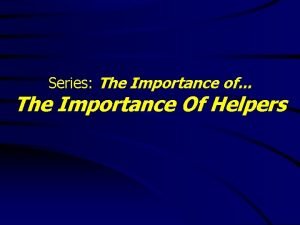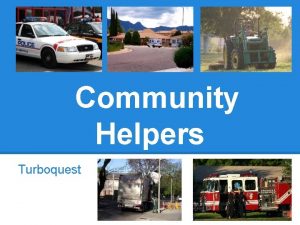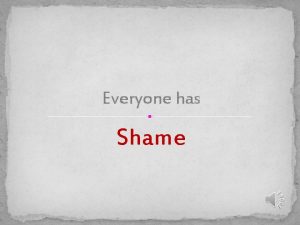Notes for helpers Supporting everyone to tell their









- Slides: 9

Notes for helpers Supporting everyone to tell their story These notes help you think how can you assist someone with dementia to give feedback using the picture story feature on care opinion

A little bit of background At Care Opinion we believe it is important that everyone can tell the story of their experience of using health and care services. This can be hard as there can be barriers to telling a first-hand account of an experience. These barriers can include • difficulties with expression and finding the correct words To enable a wider range of people to tell their story we have partnered with Talking Mats is a social enterprise that works to improve the lives of people with communication difficulties. • difficulties with memory • difficulties with writing or typing on a computer This joint work was funded through Life Changes Trust and has been developed in partnership with people with dementia, their families and staff who work with them.

The Picture Story Space Our aim was to create a way where people are enabled to tell their story by creating an alternative story space on the Care Opinion website that is adapted from the work of Talking Mats To do this we developed 1. Picture sets with different options 2. A scale that enables you to reflect whether you were happy or unhappy with the a particular option 3. A way that you can add to your story using words

The picture story sets were made up after thinking about the topics that arose on the care opinion website. Then we worked with our expert advisor groups which included • people with dementia, • their carers • staff Our aim was to find a structure that would be comprehensive but keeping thing simple and not overwhelming. An example of keeping things simple is we have not included a different picture for all the possible health and care staff. We have a picture for most used roles and an ‘other staff’ picture that can be used with words to describe the wide range of roles that exist There are two sets 1. Environment This set is focused on the physical aspects of health and care e. g. cleanliness , temperature, outside space , privacy 2. Care This set is focused on the care aspects of health and care e. g. staff skills, team work , pain relief , being involved in decisions

Why will picture help people tell their stories Why will pictures help ? • The pictures in the sets are the common issues that occur in feedback to health and care. This structure will provide a scaffold to thinking • The pictures can help work out what are the important things about the story and support sequencing of ideas • The pictures can support story telling and enable memories to be triggered An example Story from the Pilot project

Levels of support required to use the Picture Stories on care Opinion Ask someone what support they • would like Some will need • • No additional support • Some support on the more technical aspects of finding the • website , coordinating the mouse and picture etc • Some will need a scribe to add • the additional spoken information • The number of symbols available can be changed from 1 at a time to 4 at a time depending on what is most help. • You can tell a story using as few • or as many pictures as you want Some may find it helpful to do some preparation of their story using a paper version Click here to access and print pictures to help with preparation Some will not be able to use it even with support Additional guidelines about how to support people with dementia to have a conversation – https: //www. scie. org. uk/dementia/afterdiagnosis/communication/conversation. as p – https: //www. alzheimers. org. uk/info/2006 4/symptoms/90/communicating_and_lan guage/3

Top tips When you use the paper pictures Above all think about the way you communicate. • Less is sometimes more. Getting the flavour of the story is more You can change the way you interact important than every detail and that can support the other person to communicate more • Sometimes an old memory will trigger and may get mixed up in the • Give Time – let the conversation go new story if that happens try to go at the other persons pace and take with the flow and don’t contradict care with the amount and type of The pictures can be a non language you use confrontational and helpful way of • Remember making comments is keeping the conversation on track usually more helpful than asking • Practice with the scale get people to lots of questions place the pictures on whether they • Communication is often easier for were happy or not happy as you do people with communication this keep your questions open difficulties when there is a shared e. g What did you feel about the nurses focus of attention and the pictures Not closed Did you like the nurses ? can provide that focus

Some of the options are easier for some people to understand than others This relates to the cognitive demand of the options so for example options such as food , ambulance staff , medication are easy to visualise Some people will only be able to give feedback on these more ‘concrete’ ideas Options such as ‘seeing the whole me’, ‘involved in decisions’, privacy are more abstract and may not be accessible to everyone even with explanations Although always be prepared to be surprised. When we were testing out the resource one lady with late stage dementia who did not appear to be engaging in conversation said about 5 minutes after we had talked about privacy – ‘they barged in you know they did not knock on my door’

Developing further This work is based on research by Talking Mats but it is adapted and if you want to use the paper sets according to the Talking Mats principles then we recommend attending a Talking Mats foundation course see www. talkingmats. com Research references are file: ///Z: /Attachments/publicatio ns/reports/Dementia% 20 and%20 Effectiveness%20 of%2 0 Talking%20 Mats%20 short%20 Fi ndings%20(1). pdf Although this was developed with and for people with dementia. It is designed to support communication difficulties and therefore we think it will have a much wider application. We also think it important that we all become familiar with visual communication supports to help us move towards a more inclusive society

















